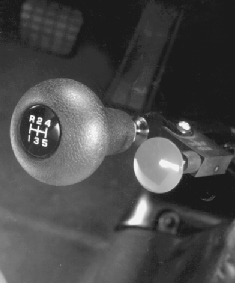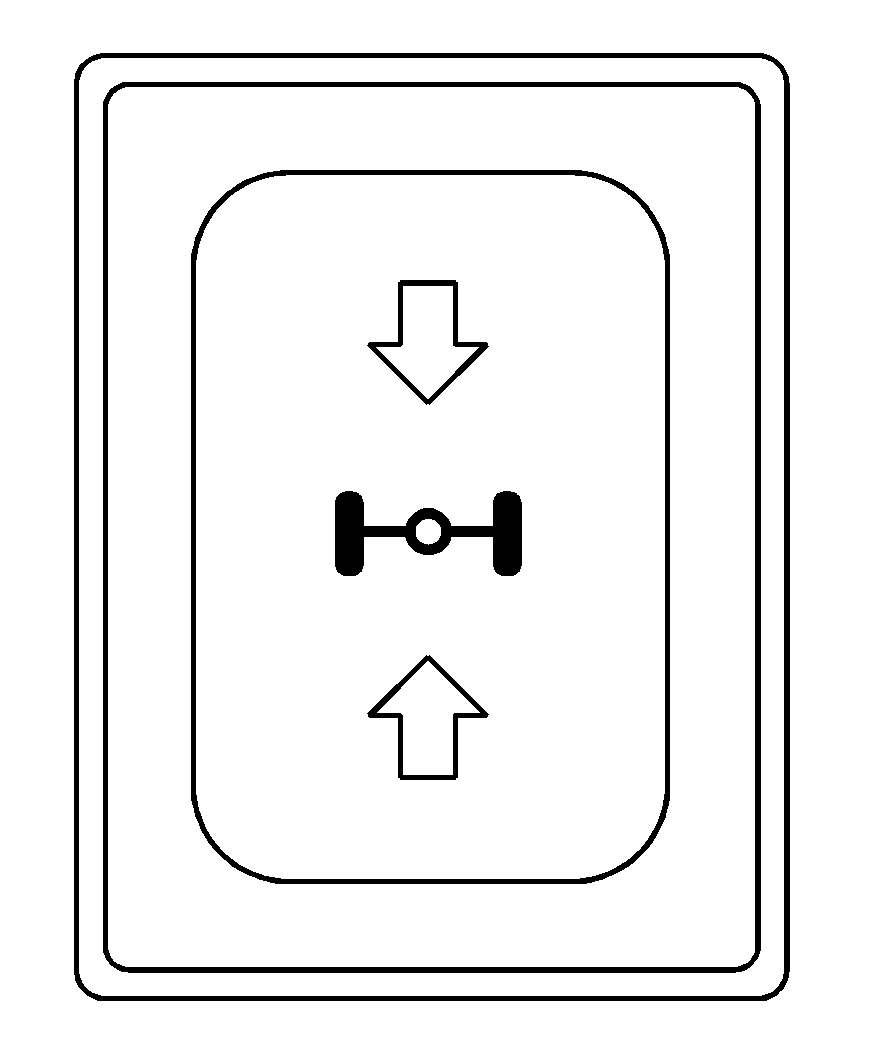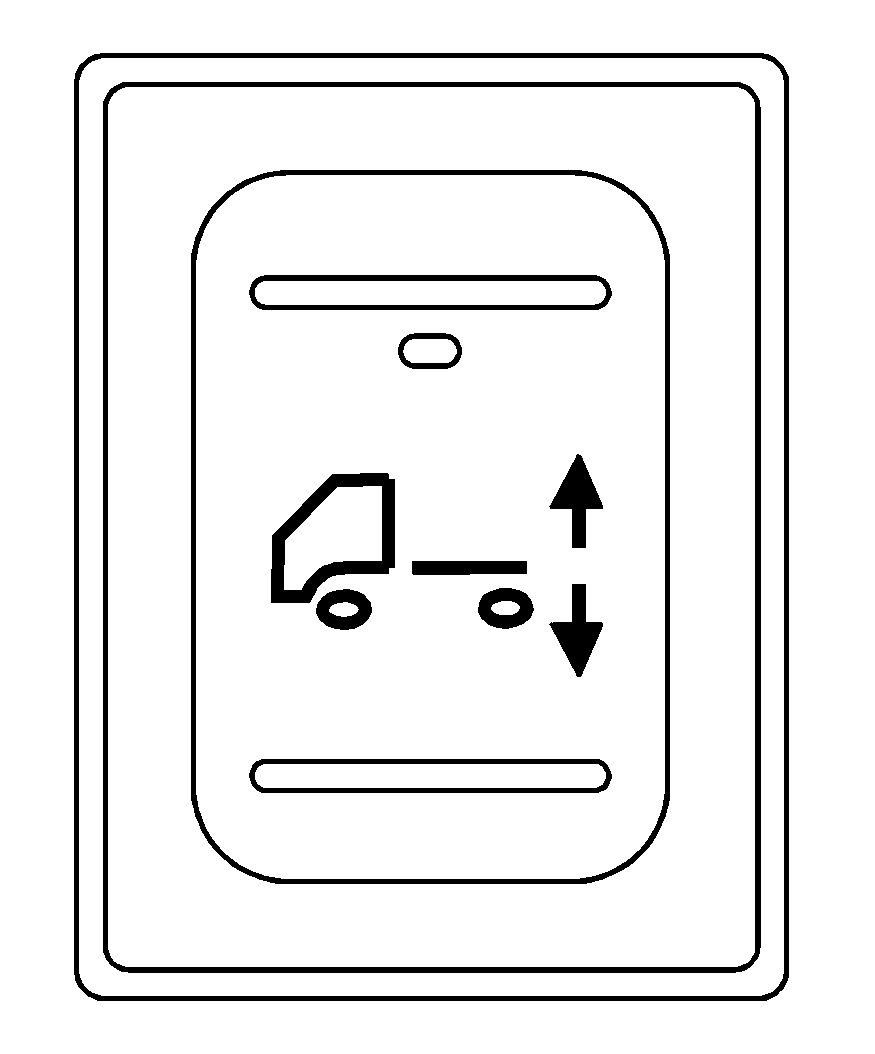If your vehicle is equipped with this feature, you'll find a label on the headliner above the windshield or in another place near the driver that shows how to use it. Be sure to follow the directions carefully.
Use the following directions based on the type of shift control you have.
Manual Transmission

The rear axle shift control switch for a manual transmission is located on the shift lever.
When the switch is up, the rear axle is in the high range. Push the switch down to change to low range.
The two-speed axle should be in low when you park the vehicle. You'll need to engage the transmission, even move the vehicle a little, to be sure the axle is in the low range. Then apply the parking brake, shift into NEUTRAL and shut off the engine.
Also, always start the vehicle in motion with the two-speed axle in the low range. To shift up from low to high, do the following:
- Move the switch up for the high range,
- disengage the clutch, and
- after a brief pause, engage the clutch and then press down on the accelerator.
To shift down from high to low, do the following:
- Move the switch down to low,
- release the accelerator and then quickly apply it again.
Automatic Transmission

The rear axle shift control switch for an automatic transmission is located in the instrument panel switchbank.
Press the bottom of the switch to get to the low range. The switch indicator light will come on when the vehicle is in low range. Press the top of the switch to return to the high range.
The two-speed axle should be in low range when you park the vehicle. Apply the parking brake, shift to PARK (P) or NEUTRAL (N) and shut off the engine.
To operate off-road or under a heavy load, shift into low range when the vehicle is standing still and then operate the transmission normally.
On the highway, with the axle in low range and the transmission in top gear, you may shift the axle to high range by raising the switch and releasing the accelerator momentarily. Reapply the accelerator after you shift.
Under light load conditions, first shift the axle into the high range with the vehicle at a standstill and then operate the transmission normally.
Air Shift Control (Automatic Transmission)

The switch for the rear axle shift control is located in the instrument panel switchbank.
Press the bottom of the switch to get to the low range. Press the top of the switch to return to the high range.
The two-speed axle should be in low when you park the vehicle.
You'll need to engage the transmission, even moving the vehicle a little, to be sure the axle is in low range. Then shift into PARK (P), apply the parking brake and shut off the engine.
Also, always start the vehicle in motion with the two-speed axle in the low position. To shift up from low to high, press the top of the rear axle shift control switch and press down on the accelerator. When you shift the axle from high to low, press the bottom of the switch, release the accelerator and then quickly press it down again.
Air Suspension
Your vehicle may be equipped with the Hendrickson HAS Series single-axle air suspension which is designed for single-axle on-highway use. The feature is available in 19,000 lb. (8 618.3 kg), 21,000 lb. (9 525.4 kg) and 23,000 lb. (10 432.6 kg) capacities for operations which require extra cubic capacity and a reduced deck height.
Rear Air Suspension Dump Control
If your vehicle is equipped with the Hendrickson HAS Series single-axle air suspension, you have this control. The air suspension dump control allows the operator to lower the deck height approximately 4.5 inches (11.5 cm) from the normal frame height.

The switch to deflate and inflate the air suspension is located in the instrument panel switchbank.
Press the bottom of the switch to deflate the air suspension and lower the deck height. Press the top of the switch to return the suspension to normal deck height.
An indicator light will come on and stay on whenever the switch is in the dumped position.
